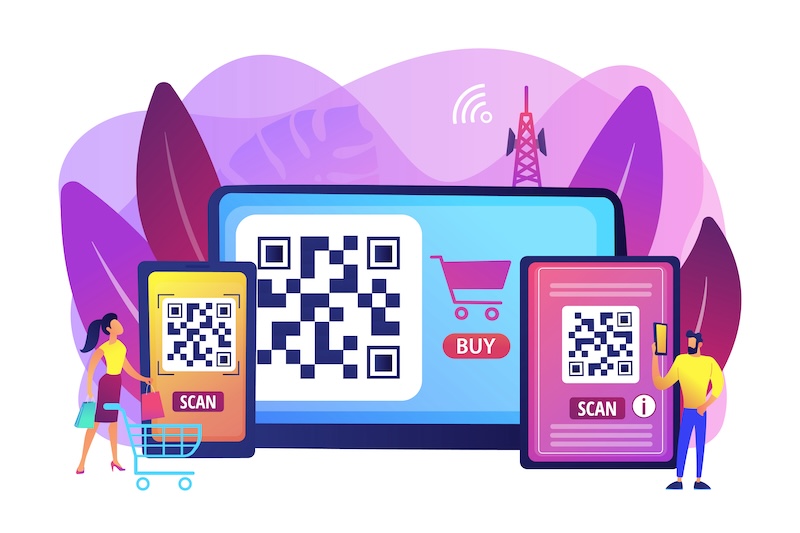Top 10 Tips for Multi-Store Inventory Management
Managing inventory across multiple stores can feel like juggling multiple things. While the goal may seem to be about keeping shelves stocked, it’s not. Managing inventory is essentially making sure each location has exactly what it needs. Furthermore, in the process, one needs to ensure that there are no stockouts or overstocking of the goods. This balancing act is key to a business's efficiency and bottom line. As companies grow and serve a wider customer base, mastering this skill becomes even more imperative.
It is here where specialized omnichannel inventory management software comes into the picture. With its support in simplifying the process, this software is designed to make managing inventory easy.
As the name suggests, the omnichannel inventory management software does a plethora of tasks, such as tracking stock, using resources wisely, cutting costs, and keeping customers happy. Inefficient inventory management can mean a loss in sales, overstock, and higher operating costs.
In today’s competitive market, having strong systems is essential for staying ahead and succeeding in the long run. The following sections of this blog will attempt to help us gain more insight into multi-store inventory management, with helpful tips.

See how smart inventory management can change the game for your multi-store business
How Does Multi-Store Inventory Work?
If we consider the practicality of the process, managing inventory across multiple stores can be challenging. However, with the right tools, it can be much simpler. Here’s a quick overview:
For Small Businesses
Managing small to medium scale businesses and keeping track of inventory is doable in a basic accounting or inventory software that records the sales and purchases and keeps track of what is the current stock on hand. Using manual methods or simple software to ensure each location has what it needs without overstocking, is one of the ways to go about it. Nonetheless, even in these setups, issues such as missing items or inaccurate forecasts can take place. This is where multi-store inventory management software comes in handy. This software is programmed to provide tools that grow with your business in addition to keeping the rest of the setups in the process organized.

For Larger Businesses
On the other hand, running a bigger operation with multiple stores, regional warehouses, or distribution centers comes with its set of challenges. Managing inventory for these businesses can become quite complex. In such scenarios, a multi-location inventory management system can be your solution. This tool gives you real-time insights into stock levels across all your locations. The tool’s primary feature helps you keep everything balanced and avoid fallouts that could be financially taxing. Plus, they often come with features such as automated reordering and forecasting. This makes it easier to scale your business efficiently.
One of the challenges of larger set-ups is the fact that you’re dealing with an array of products, different regional demands, and logistical challenges. Omnichannel inventory management software helps you keep everything in sync, ensuring your products are where your customers want them, right when they need them.

Finding it tough to juggle inventory across multiple stores?
Essential Tips for Effective Multi-Store Inventory Management
1. Centralize the Inventory System
A centralized inventory management system is imperative for businesses managing multiple stores. The system allows you a unified view of stock levels, orders, and movements across all locations. Furthermore, once this data is centralized, it helps businesses make informed decisions about stock transfers, reordering, and distribution. It also reduces the risk of errors and discrepancies.
The benefits of the centralizing process don’t end here. Once the data is amalgamated in one place, it helps to streamline operations by integrating data from various sources. These sources include POS systems, online sales channels, and warehouse management systems. This integration improves forecasting and planning, cutting down on the chances of overstocking or understocking. In addition to this, a centralized system supports better decision-making, as managers have a clear picture of the entire operation's status.
2. Implement Real-Time Tracking
It’s one thing to keep a consolidated track of things, real-time tracking, however, offers a better way of managing multiple retail stores. This feature allows businesses to monitor stock levels, sales, and orders as they happen. Also, real-time data helps spot fast-moving products, detect stockouts early, and prevent overstock situations. With this feature, businesses can quickly respond to changes in customer demand. This enables ensuring that each store has the right products at the right time.
Implementing real-time tracking involves using various technologies. Some of them include barcode scanners, Radio-Frequency Identification (RFID) tags, and integrated software solutions. With the help of these technologies, businesses get accurate and up-to-date information. On a larger scale, this information proves to be vital for making timely decisions and implementation of plans. The real-time tracking feature also helps to manage promotions, seasonal sales, and other events. Generally, it is these events that can cause sudden changes in demand.
3. Optimize Stock Levels
Our next tip is, to maintain optimal stock levels. Not only is this feature a key to efficient multi-store inventory management, but also helps in balancing the need to meet customer demand to minimize excess inventory. Businesses should use data analytics and forecasting tools to predict demand trends and adjust inventory levels accordingly. This practice not only reduces carrying costs but also improves cash flow and profitability.
To optimize stock levels, businesses need to consider factors like lead times, supplier reliability, and sales patterns. Using advanced analytics, companies can identify trends and adjust stock levels proactively. For example, moving stock of an item from a store or channel where the stock is not moving to a different one where the sales probability is high for the same item. This approach improves efficiency and enhances customer satisfaction by ensuring that popular products are always available.
4. Use Barcode and RFID Technology
Using barcode and RFID technology in your inventory management can significantly boost accuracy and efficiency. These technologies make it easy to track products, reducing the chance of human error in data entry. Barcodes are common in retail settings, allowing for easy scanning and tracking of products during checkout, stocktaking, and restocking. RFID offers even more advanced capabilities. RFID tags can store more information than barcodes and don’t require line-of-sight scanning, making them great for tracking items in warehouses or throughout a store. Implementing RFID technology can streamline inventory audits, provide real-time data on product locations, and even help prevent theft by triggering alarms if products are moved without authorization. The theft triggering chips are usually based on RF but are called sensor tags instead.

5. Conduct Regular Audits
Regular inventory audits are crucial for maintaining accuracy in multi-location inventory management. Audits help identify discrepancies between recorded and actual stock levels, allowing businesses to address issues like shrinkage, theft, or data entry errors. Depending on the size and complexity of the operation, businesses can conduct full or partial audits. Full audits involve a comprehensive count of all inventories, while partial audits, or cycle counts, focus on specific categories or locations.
Using technology like mobile scanners and inventory management software can streamline the audit process, making it more efficient and less disruptive to daily operations. Regular audits not only ensure data accuracy but also provide insights into inventory performance, helping businesses make informed decisions about stock replenishment and reduction.
6. Establish Standard Operating Procedures (SOPs) for All Locations:
Consistency is key when managing inventory across multiple stores. Establishing standard operating procedures (SOPs) ensures that all locations follow the same processes for inventory management, from receiving and storing products to conducting audits and processing returns. SOPs help reduce variability, improve efficiency, and ensure that best practices are consistently applied across the organization.
Documenting these procedures and training staff at all locations is crucial. SOPs should cover all aspects of inventory management, including how to handle discrepancies, the process for damaged goods, and protocols for seasonal stock adjustments. Regularly reviewing and updating SOPs ensures they remain relevant and effective in addressing the business's current needs.

Optimize your inventory management with Ginesys and Ginesys One
7. Train Your Staff:
Well-trained staff are essential for effective store inventory control. Employees need to understand the importance of accurate inventory management and be familiar with the tools and systems in place. Training should cover the use of inventory management software, the correct procedures for receiving and storing stock, and the importance of data accuracy.
Ongoing training is equally important, as it helps staff stay updated with new systems, technologies, and company policies. Investing in staff training not only improves operational efficiency but also enhances employee satisfaction and retention by empowering them with the skills needed to perform their roles effectively.
8. Develop a Robust Supply Chain:
A well-organized and reliable supply chain is critical for efficient multi-store inventory management. Businesses should establish strong relationships with suppliers, ensuring they can meet demand consistently and on time. This involves negotiating favourable terms, setting clear expectations, and maintaining open communication.
In addition to reliable suppliers, businesses should also consider their logistics and distribution networks. Efficient transportation and warehousing solutions are essential for the timely replenishment of stock across multiple locations. Businesses can further optimize their supply chain by using technology to forecast demand, plan deliveries, and manage inventory levels.
9. Plan for Seasonal Variations:
Retail businesses often experience fluctuations in demand due to seasonal trends, holidays, and promotional events. Planning for these variations is essential for maintaining optimal inventory levels and ensuring customer satisfaction. Businesses should analyze historical sales data, market trends, and promotional calendars to forecast demand accurately.
Using multi-store inventory management software, companies can automate the process of adjusting stock levels in anticipation of seasonal changes. This helps prevent stockouts of popular items during peak seasons and reduces the risk of overstocking items that may not sell as well. Effective planning also involves coordinating marketing and sales efforts with inventory management to maximize profitability.
10. Enhance Multi-Store Inventory Management with Ginesys Software and Technology Solutions
To fully leverage the benefits of these strategies, businesses should consider integrating advanced software solutions offered by Ginesys. These solutions are designed to streamline inventory management, enhance operational efficiency, and provide comprehensive data analytics for better decision-making.
- POS Software: Ginesys One's point-of-sale (POS) software offers robust features for managing transactions, inventory, and customer data. It provides real-time insights into sales performance and stock levels, enabling businesses to respond quickly to changing demand. The POS system integrates seamlessly with other solutions offered by us, ensuring a unified approach to inventory management.
- WMS Integration: A Warehouse Management System (WMS) is crucial for optimizing storage, picking, and shipping processes in larger operations. Ginesys offers WMS integration, allowing businesses to manage their warehouse activities efficiently. This integration provides real-time visibility into inventory, improves order accuracy, and enhances overall supply chain efficiency.
- E-commerce Software: In today's digital age, having a strong online presence is essential for retail success. Ginesys' e-commerce i.e. Browntape OMS, software provides businesses with the tools they need to manage online sales, integrate with existing inventory systems, and provide a consistent brand experience across all channels. This software supports various e-commerce functionalities, including order and inventory management across all online channels.
Final Thoughts:
Effective multi-store inventory management is crucial for retail businesses aiming to streamline operations and enhance customer satisfaction. Implementing centralized systems and advanced technologies like barcode and RFID is key to achieving accuracy and efficiency. Regular audits and standard operating procedures (SOPs) ensure consistent practices, while staff training maintains these standards across all locations.
Building a robust supply chain and planning for seasonal variations allow businesses to adapt to demand changes, preventing stockouts and overstock situations. Leveraging comprehensive software solutions like those offered by Ginesys One, including the Ginesys ERP and its Order and Inventory Management System (OMS), provides the necessary tools to manage inventory seamlessly across various channels.
In a competitive retail landscape, mastering these aspects of inventory management is essential. Businesses that prioritize effective inventory control are better equipped to meet customer expectations, optimize resources, and drive profitability.
Take control of your multi-store inventory management today. Assess your current systems and explore Ginesys One’s solutions to enhance efficiency and profitability. Request a Demo to see our software in action.

